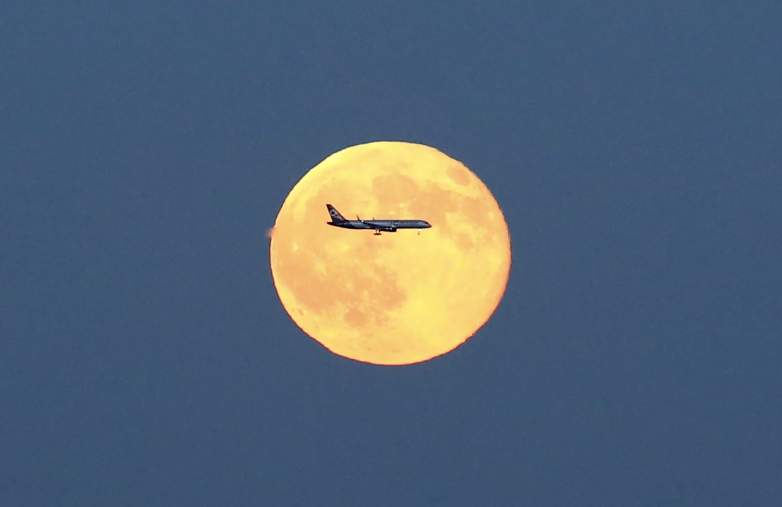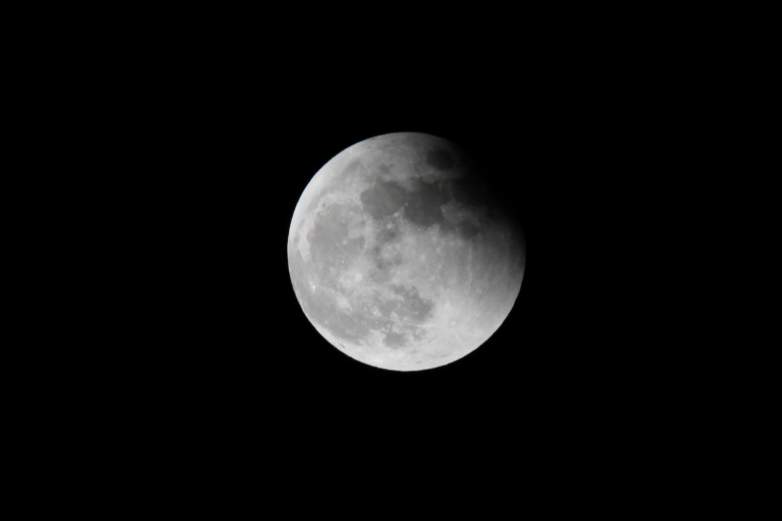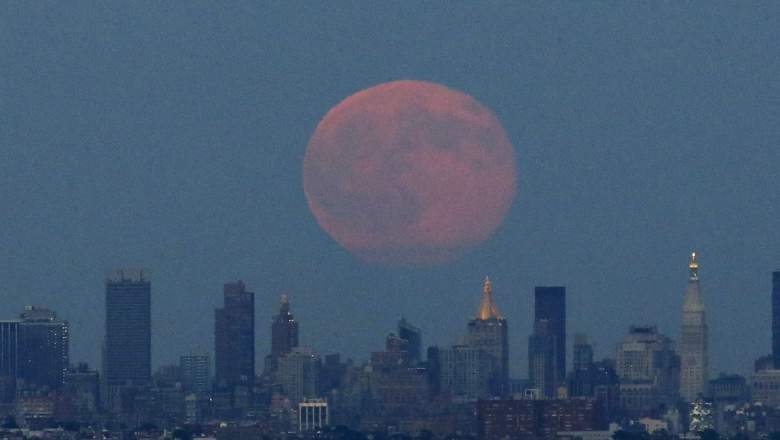
Getty Sometimes other moons appear orange, like this Blue Moon.
The Hunter’s Moon has been in the sky for the last couple of days, but it will reach its peak brightness and beauty tonight. If you see a large, beautiful, pale orange moon in the night sky, it’s the Hunter’s Moon. Here’s everything you need to know about the Hunter’s Moon, including when and where to see it.
1. The Hunter’s Moon Is the Traditional Name for the October Full Moon
The Hunter’s Moon is the name given for the full moon you see in October. It’s also called the Dying Grass Moon, the Travel Moon, and sometimes the Blood Moon or Sanguine (especially when it coincides with a lunar eclipse.) Being the October full moon, it helped settlers know that it was time to prepare for colder weather and fields without crops.
The Hunter’s Moon is the first full moon that appears after the Harvest Moon, The Old Farmer’s Almanac shared. Sometimes it appears in November rather than October.
Its first known use was in the Oxford English Dictionary in 1710.
2. Why Does the Moon Look Orange?
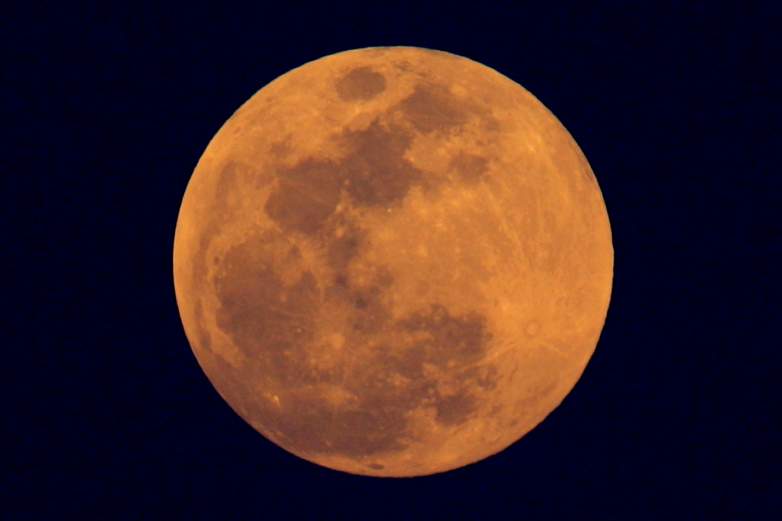
GettyWhile the Hunter’s Moon appears pale orange, it is not typically as bright as a red lunar eclipse can appear, which is seen here.
In some areas and at certain times tonight, the moon will appear orange. Why? It looks orange because it’s in the sky opposite of the sun and will be visible on the horizon around the same time that the sun is setting, CBS shared. This means that the moon will reflect the sun’s light in a way that gives it an orange hue.
According to The Old Farmer’s Almanac, it also appears orange because the light reflecting off it must travel through more particles of air to reach our eyes, scattering the shorter blue wavelengths and leaving a more orange tint for you to see. This is because when you look straight ahead, you’re looking through a thicker atmosphere than when you look straight up, EarthSky shared.
3. The Moon Will Be Visible in the Sky All Night Long
Tonight, October 13, is the only night of the month when the moon is visible in the sky all night, The Old Farmer’s Almanac shared. It will be visible from the time the sun sets to the time the sun rises in the morning.
Being visible on the horizon around sunset will also help the moon appear bigger, The Old Farmer’s Almanac shared. This is because it looks large in relation to other objects on the horizon, so our brain interprets the moon as being massive in size. When it’s high in the sky with nothing but a vast sky to compare it to, our brains interpret the moon as being smaller.
4. Here’s When the Moon Will Be Brightest
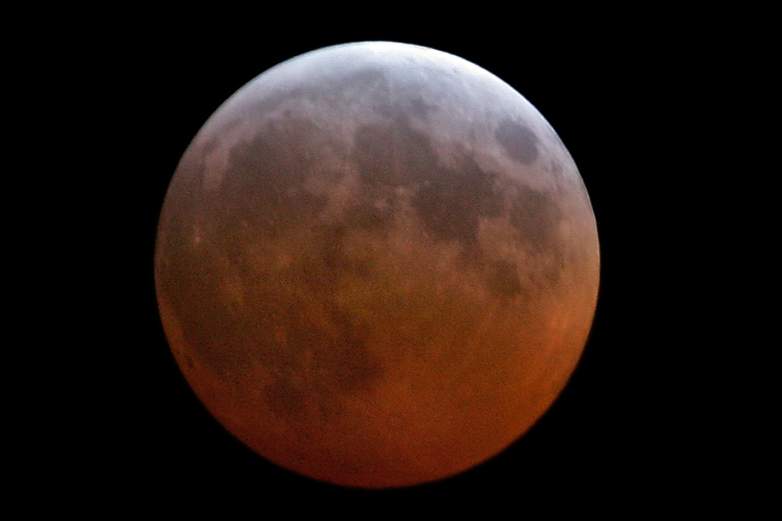
GettyWhile the Hunter’s Moon appears pale orange, it is not typically as bright as a red lunar eclipse can appear, which is seen here.
The moon will appear brightest and largest right as the sun is setting tonight.
According to NASA, the moon will appear opposite the sun at 5:17 p.m. Eastern on Sunday night tonight, at which time it will be brightest. (Other sources say the start time is 5:08 p.m. Eastern, so you’ll probably want to be out by 5 p.m. just to make sure you don’t miss the brightest moment in the sky.) You’ll be able to see the Hunter’s Moon in the sky through Tuesday morning.
To find the exact time of the moonrise in your location, you can use The Old Farmer’s Almanac moonrise calculator here. You can also use a weather app, like Dark Sky, which will tell you what time the sun is setting in your region.
5. Planets Will Be Visible Tonight Too
The Hunter’s Moon isn’t the only beautiful celestial object in the sky tonight, NASA shared. The brightest planet you can see tonight is Jupiter in the southwest at about 19 degrees above the horizon. Saturn can be seen about 28 degrees above the horizon.
The Summer Triangle will be directly overhead, and the star Vega will be west-northwest at 76 degrees above the horizon. Deneb will be 79 degrees above the horizon to the northeast, and Altair will be 60 degrees above the horizon to the south.
READ NEXT: WATCH: Man with TV on Head Leaves CRT TVs on Porches in Virginia
